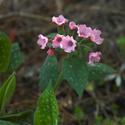 Honey Bees in the Garden: January
Honey Bees in the Garden: JanuaryHoney bees have been living on stored honey since the killing frosts in autumn took the flowers away. They will be eager for fresh food as soon as it's warm enough for them to fly.
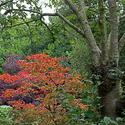 The Rookery: One of London's Secrets (Part 2)
The Rookery: One of London's Secrets (Part 2)The wonders of this Garden never cease to amaze me. I hope you enjoyed your tour in Part 1. Now let us see what other delights we can find in this 3 acre wonder.
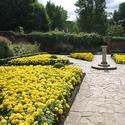 The Rookery: One of London's Secrets (Part 1)
The Rookery: One of London's Secrets (Part 1)A house called the Rookery was here on this site with a spa, but when the spa declined in popularity the Rookery's formal gardens and spa were bought and turned into a public garden. It was the local people, who bought the land for £3,000, that saved this astonishing place. A three-acre garden was built, including a water garden, formal gardens, a stunning white garden, herbaceous borders, an English garden, fantastic trees, ponds, and much more. Let me take you on a walk around this tiered and secret garden.
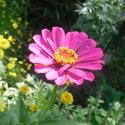 Companion Planting: A Reliable Option or Nonsense?
Companion Planting: A Reliable Option or Nonsense?So what about Companion Planting? Is it merely folk lore and old wives' tales without any scientific evidence to back it up? Or can you create a beautiful garden that flourishes in rhythm with the natural balance that mother earth has to offer (without the use of pesticides or other harmful chemicals) by using companion planting practices? Maybe some traditions and folklore were created for a reason.
 The Crystal Palace & the Park (Part 2)
The Crystal Palace & the Park (Part 2)I do hope you enjoyed your first tour of this stunning place. Now let me show you what happened on the night of October 30, 1936 as disaster struck. Coincidentally, New York's own Crystal Palace met a similar fate in 1857. There is also a lot more to the Park than you may think. Get your picnic hamper ready and let us see what else we can find in this amazing place.
 The Crystal Palace & The Park (Part 1)
The Crystal Palace & The Park (Part 1)The Crystal Palace was a massive iron and glass structure built for the Great Exhibition in 1851, originally it was in Hyde Park, a Royal Park, in London. Prince Albert came up with the idea of showing the world Britain's industrial revolution. It was designed by the famous Sir Joseph Paxton; in 1851 when the Exhibition closed, he came up with the idea of moving this colossal building to Penge Place Estate in southeast London. Punch magazine in a satirical moment called it the "Crystal Palace" and the name stuck, so this part of Sydneham became known as Crystal Palace. This exhibits were in fact from all over the world; the USA, Egypt, France & Germany to name but a few. The displays were set into categories; raw materials, machinery, manufacturers and fine arts. It was too big to be financially viable and on a fateful night in 1936 disaster struck.
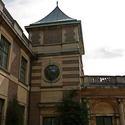 Eltham Palace: 1930's Art Deco Palace & Gardens versus the Ancient (Part 2)
Eltham Palace: 1930's Art Deco Palace & Gardens versus the Ancient (Part 2)I do hope you enjoyed Part I of the Palace and Gardens. Let us take another walk and see what else we can find in the 19 acres around the Palace, both old and new! There were a few surprises and all of them very nice ones.
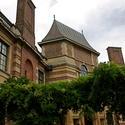 Eltham Palace: 1930s Art Deco Palace & Gardens versus the Ancient (Part 1)
Eltham Palace: 1930s Art Deco Palace & Gardens versus the Ancient (Part 1)Eltham Palace is a place of many contrasts. First recorded in the Domesday book in 1086 AD, it was then owned by the Bishop of Bayeaux. In 1305 it was given to the Crown and taken over by King Edward II, a succession of monarchs then extended and improved it including King Henry IV and King Edward IV. King Henry VIII grew up here and both he and his daughter Queen Elizabeth I also added to it! The Last Royal resident was King Charles I, who lost the Palace and his life during the English civil war in 1648 when a lot of the Palace was demolished. It was during the 18th century that it was used as a barn, until in the 19th century people called for it to be restored! In 1933 the Courtaulds, a very rich family, leased the land and built an Art Deco Palace attached to the Great Hall that was built in 1470. As you will see they also did a bit to the Garden.
 Propagation of the Upright Sedum Varieties
Propagation of the Upright Sedum VarietiesNot all Sedum are created equal - the low growing ground cover types have much different root systems than the upright taller varieties and species. Here's how I propagate these taller varieties and species for lots more plants.
 Grafting Adenium 101
Grafting Adenium 101I will admit right here that my first attempt at grafting was a complete failure. Only one of twelve grafts survived and grew. It was almost enough to make me give up. What kept me trying was a couple of chance natural grafts that live on one of my plant benches. If these two could be secure grafts without any help from anyone, then surely I could get two pieces of adenium to grow together. My second attempt went somewhat better with nine of twelve succeeding. This will be my third try.
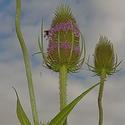 Winchester: Magical & Mystical (Part 2)
Winchester: Magical & Mystical (Part 2)In Winchester Part I, I wrote about the city center. Now we go past the city walls and into the water meadows and other interesting places along the way! I hope you enjoy it as much as Part I.
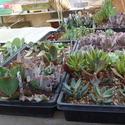 Propagation of Tender Succulents
Propagation of Tender SucculentsLuckily for those of us that like to make crafts with succulent plants, they’re pretty easy to propagate.
 Winchester: Magical & Mystical (Part 1)
Winchester: Magical & Mystical (Part 1)The first enclosure at Winchester was built in 150 BC during the Iron Age, at the same time that a trading center was established. In 70 AD the Romans arrived and called Winchester "Venta Belgarum - marketplace of the Belgae," a regional capital. Then in 410 AD the Romans left and the capital collapsed. In 648 AD the first minster was founded as Christianity came to Winchester, now called the old minster. After the City's surrender to William the Conqueror in 1066, he started to build the present cathedral. The history of what was once the capital of England is so great it would need two lifetimes to even learn it all!
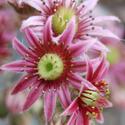 Seed Propagation of Hardy Succulents
Seed Propagation of Hardy SucculentsI propagate hardy succulents such as Sempervivum, Jovibarba and Rosularia from seed to give me a chance of getting some exciting new types as well as a very economical way to get lots of plants. Using seed is a way to get many choices, some of them different and unusual. Sometimes you get lots of very similar types, but that’s okay; use them in tapestry beds, mosaics and other crafts.
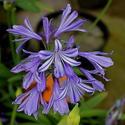 Shannon's Garden Centre
Shannon's Garden CentreIn this day and age with all the chain owned, supermarket style Garden Centres, it is a pleasure to have a family run business with their own Garden Centre. This is a place for plant lovers, from beginners to the experienced. With helpful and knowledgeable staff, If they haven't got what you want, they will try to get if for you!
 Historic Greenwich and the Royal Park (Part 2)
Historic Greenwich and the Royal Park (Part 2)I hope you enjoyed Part 1 of my articles on this amazing place. To those of you who have been to Greenwich, some of the places are recognizable instantly, some are not. A lot of people travel thousands of miles and never actually get to see what the Park, the Royal Naval College or indeed Greenwich has to offer. If you ask most people if they have ever seen the Roman remains in the Park, they have no idea there were any!
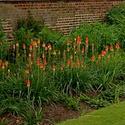 Historic Greenwich and the Royal Park (Part 1)
Historic Greenwich and the Royal Park (Part 1)Greenwich has more history than most people could research in their lifetime. From stone age tools found in Greenwich, the Romans in AD43, the Saxons settlement in the 10th century, to the Danes who in 1011 kidnapped Archbishop Alfege for a ransom, it is an amazing place. When the ransom was not paid, he was murdered and St. Alfege's Church stands in Greenwich to this day! Many of the things in Greenwich the tourists don't see, as they simply don't know about them.
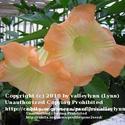 Brugmansia 'Short Standards'
Brugmansia 'Short Standards'Almost everyone likes “standards,” those nice straight tree brugs. Standards form well-shaped canopies and make a great display when they bloom. Unfortunately, not all plants want to grow in the shapes we like best.
 The Blythe Hill Tavern
The Blythe Hill TavernThis is one way our community can say thank you to a Landlord with passion. He loves golf, horse racing, Gaelic football, rugby, soccer, but more than that, he has won Pub Of The Year for his beer for two years running now. What they fail to mention is his hard work and passion to make everyone welcome, young or old. Children are welcome in his garden; his love of his garden and those who visit it indicate to us the depth of his family values.
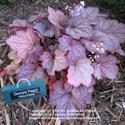 Heuchera: Jewels in the garden
Heuchera: Jewels in the gardenHeuchera (pronounced Hew-ker-ah), also commonly called Coral Bells or alum root, are known and planted mostly for their bright, colorful leaves that bring jewel tones to the garden.
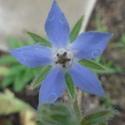 Borage for Courage
Borage for CourageThis beautiful plant is said to bring courage to the heart and drive away all sadness. And that's just the beginning of all the lovely virtues of this herb. Borage is also a great companion to some of your garden favorites. Bees love the nectar rich flowers. I like to add the vibrant blue flowers to salads but they are also great candied for desserts or fresh in beverages. You can make your own flowery ice cubes with your garden edibles, there are easy instructions at the end of this article.
 Ramblings of a New Rose Lover...
Ramblings of a New Rose Lover...Like most other gardeners and floral designers, I have always thought Roses were pretty but not until this year was I bitten by a familiar bug in a different form.
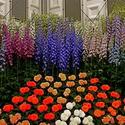 The Chelsea Flower Show 2010
The Chelsea Flower Show 2010Despite a few articles in the press before the show wondering what Chelsea will be like in the financial crisis, plus their normal doom & gloom; the horticulturalists and everybody else involved in the world's most famous flower show gave them all a quick lesson in how it can and should be done!
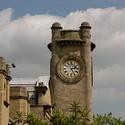 Hornimans Museum & Gardens
Hornimans Museum & GardensHornimans Museum was one man's dream, and he fulfilled it. Fredrick John Horniman was a tea trader who started collecting Natural History and other artifacts from all over the world for his family home in southeast London in 1860. However his collection outgrew his home, so he had a new Museum designed and built in 1898, which was opened to the Public in 1901. At first it was for Natural History specimens and musical instruments, but he acquired art & crafts, fossils and Egyptian mummies. He donated the museum and gardens to the people of London, "as a free gift to the people of London forever for their recreation, instruction and enjoyment." It is now as it was then, a free museum and gardens.
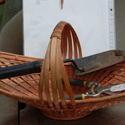 Packaging Sedum and Semp for Mailing
Packaging Sedum and Semp for MailingFirst prepare a list of what is being sent. Choose your basket or tray for gathering plants from your yard. You will also need pruners and a hand shovel.